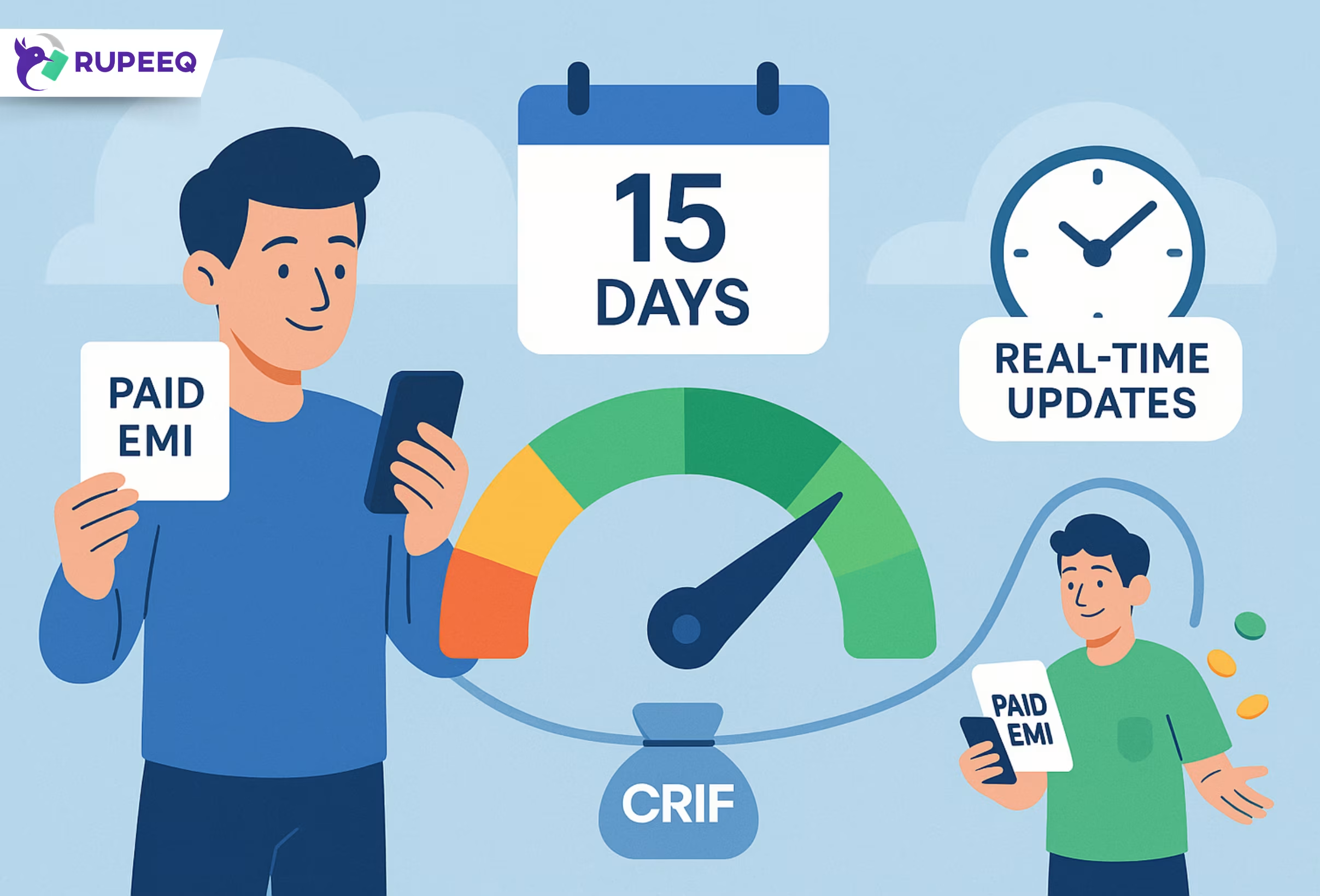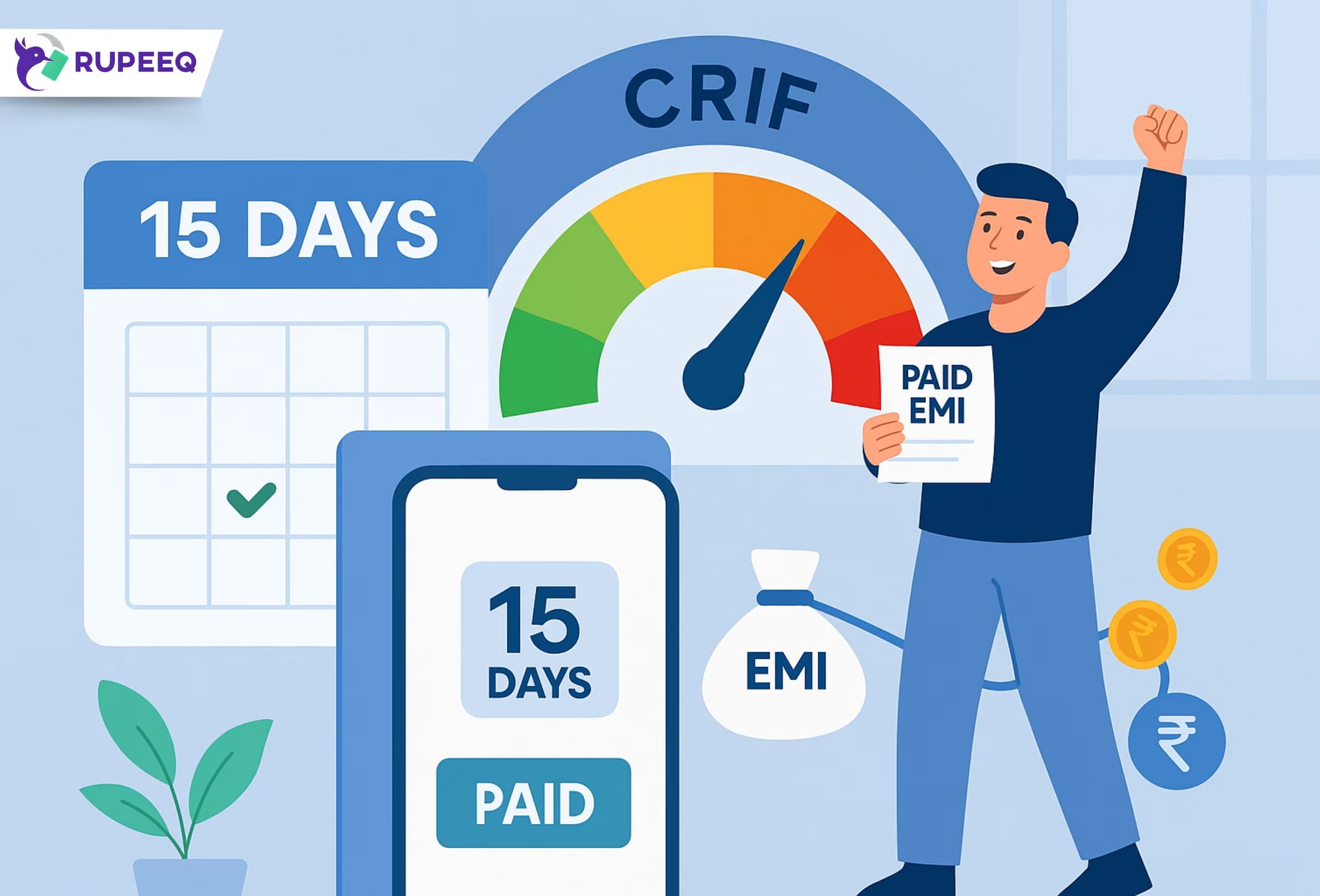Starting January 1, 2025, the Reserve Bank of India (RBI) has directed all lenders to update credit bureaus like CRIF every 15 days instead of the older monthly schedule. This change may seem like a small administrative tweak, but it holds major implications for borrowers who rely on loans, EMIs, and credit score evaluations.
In this blog, we explain what CRIF’s new reporting frequency means, how it impacts your credit profile, and why you—as a borrower—must stay updated.
What Is CRIF’s Credit Reporting Frequency?
CRIF is one of the RBI-authorized credit bureaus that tracks your borrowing history and generates your credit score. This score is crucial for loan approvals, interest rate negotiations, and even credit card eligibility.
Earlier, lenders submitted your repayment data to CRIF once a month. Now, as per RBI’s new rule, this will happen every 15 days. That means your latest EMI payments, defaults, loan closures, and credit utilization get reflected much faster.
Why the Shift to 15-Day Reporting Matters
This change isn’t just a backend update—it impacts your real-time creditworthiness. Here’s why understanding this shift is essential:
- Faster reflection of repayments: Timely EMI payments or cleared dues now improve your score faster.
- Faster impact of defaults or missed payments: A missed payment shows up within 15 days—reducing your buffer to fix issues before lenders notice.
- Better alignment with real-time underwriting models: Lenders using RupeeQ or other fintech platforms rely on more current data to generate pre-approved offers.
RupeeQ Tip: If you’ve paid off a loan or made an EMI payment, track your CRIF score 2 weeks later to see if it reflects.
How Does 15-Day Reporting Affect Your Credit Score?
Let’s explore how your credit score dynamics change with this update.
| Scenario | Old Monthly Reporting | New 15-Day Reporting |
| Paid EMI on time | Reflected after 30 days | Reflected after ~15 days |
| Missed EMI | Showed up after 30 days | Flags within 15 days |
| Cleared credit dues | Late credit update | Faster utilization correction |
| New loan taken | Shown in next cycle | May appear in same month |
You now have a tighter, more responsive feedback loop on your credit activities.
Real-Time Lending: Why Updated CRIF Reports Help Borrowers
Fintech lenders and marketplaces like RupeeQ use real-time credit data to generate loan offers. Here’s how the new reporting cycle benefits you:
- Faster pre-approved offers
If your score crosses a threshold (say 720+) after paying an EMI, RupeeQ may unlock pre-approved loan options in the same month. - Dynamic interest rates
Interest rates can shift based on your most recent credit behavior. The sooner your score improves, the sooner you can benefit. - Lower risk of outdated data
Shorter reporting cycles mean fewer chances of loan rejections due to stale data.
RupeeQ Tip: Log in to RupeeQ every two weeks to check if any new offers have appeared based on your latest CRIF score.
What Borrowers Need to Be Careful About
With faster updates, you also have less time to correct errors or fix late payments before they show up. Here’s what you should do:
- Set EMI reminders: Use bank apps or personal calendars to ensure timely payments.
- Dispute errors early: If you find incorrect entries in your CRIF report, raise disputes immediately. Don’t wait for month-end.
- Track your score twice a month: Match it with your repayments to spot discrepancies.
- Keep utilization low: Credit card usage gets reflected quicker now, so aim for <30% utilization consistently.
Does This Change Apply to All Bureaus or Just CRIF?
While this blog focuses on CRIF, the RBI circular applies to all credit bureaus, including CIBIL, Experian, and Equifax. However, each lender may have separate tech integrations with each bureau. So, a lender might update CRIF more promptly than others.
That’s why it’s useful to check your CRIF-based score on RupeeQ regularly, especially when applying for loans or resolving past issues.
Final Thoughts
In today’s fast-paced lending landscape, updated credit data is the new currency. The RBI’s move to 15-day reporting means both opportunities and responsibilities for borrowers. On the bright side, your credit improvements show up quicker. But the flip side is that missed payments also affect your profile sooner.
By staying alert, paying on time, and using platforms like RupeeQ to monitor real-time CRIF updates, you can turn this change into an advantage.
Let us know if you’d like a credit score re-check or want to explore pre-approved offers based on your latest CRIF report.







